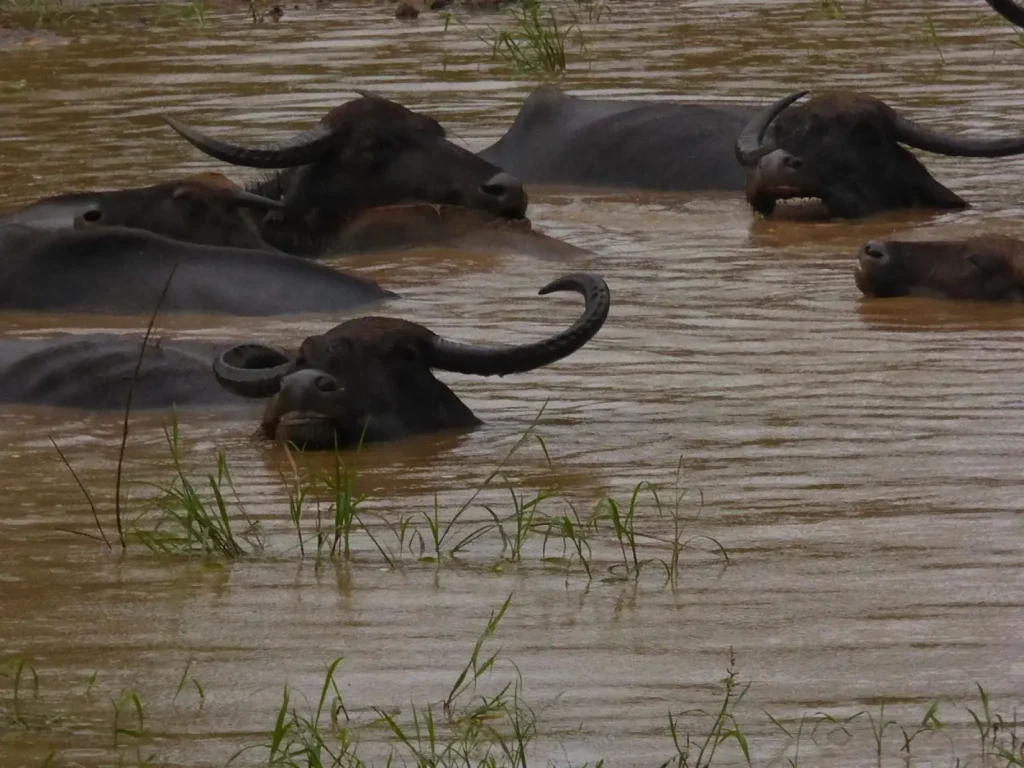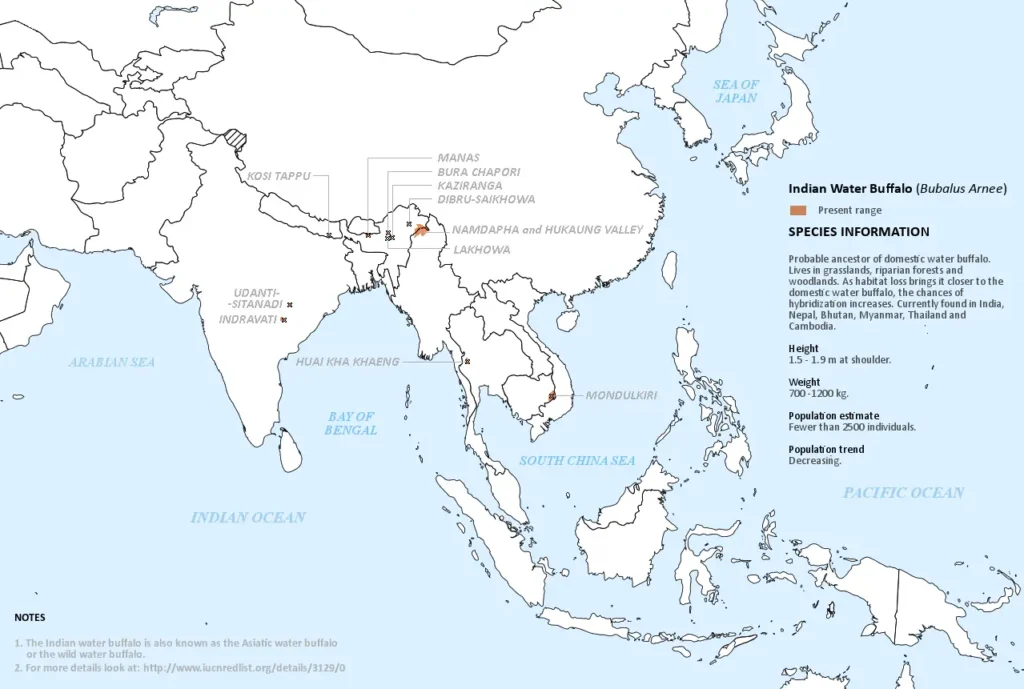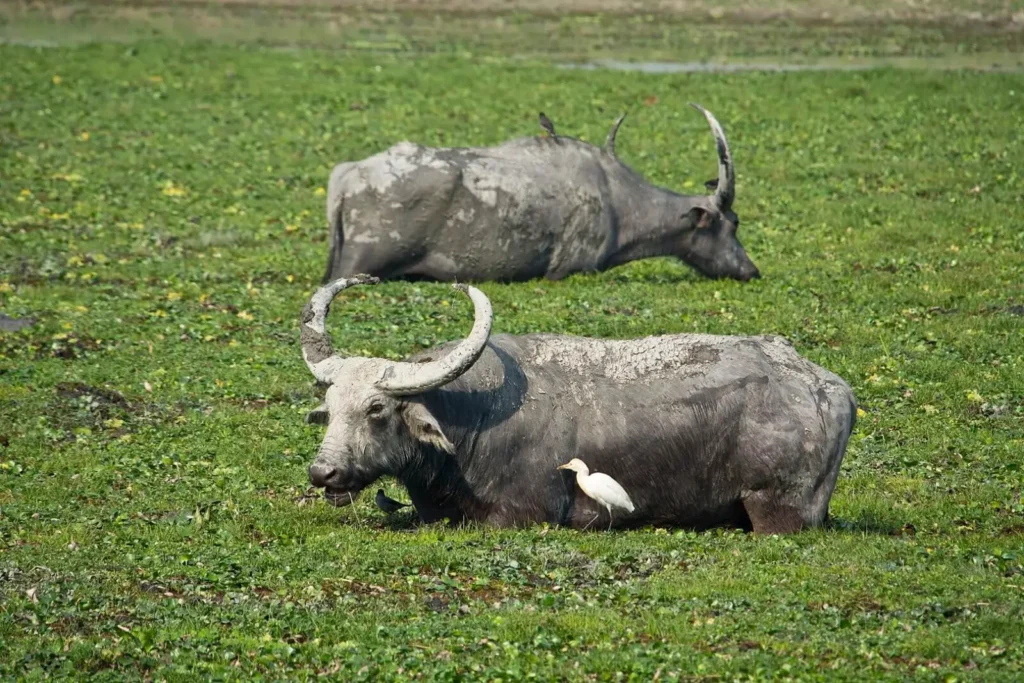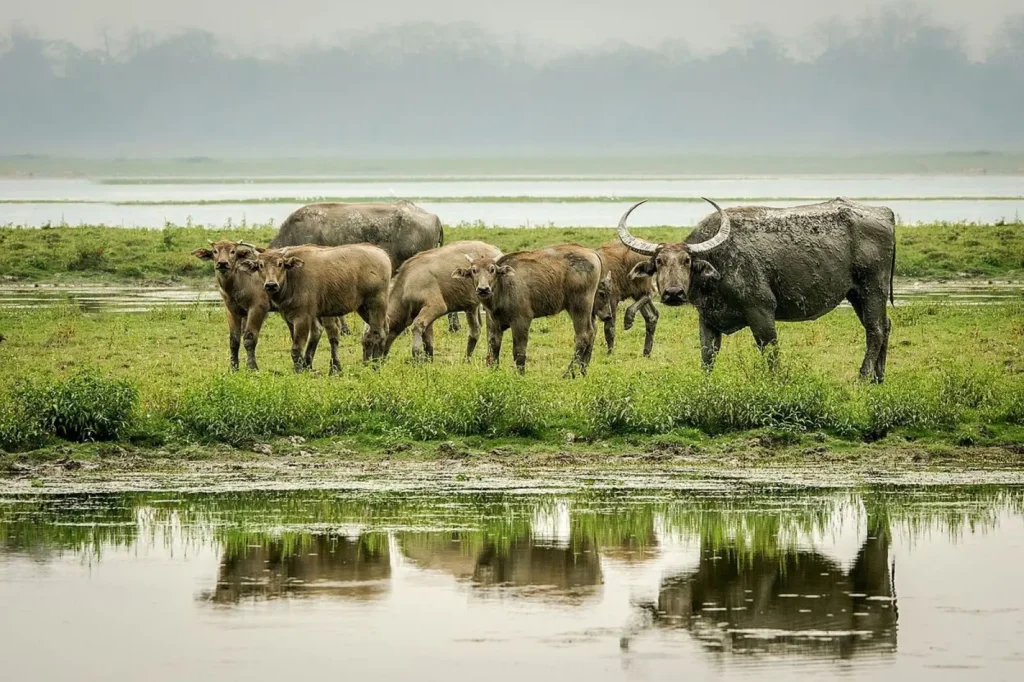The water buffalo (Bubalus bubalis) is a large, powerful animal native to South Asia that has been a faithful companion of humans for thousands of years. Its strength, endurance, and ability to work in swamps and rainstorms have made it indispensable in agriculture in many countries. This species has also survived in the wild, although it is under threat.

📚 Classification
• Kingdom: Animals (Animalia)
- Type: Chordate
- Class: Mammalia
- Order: Artiodactyla
- Family: Bovidae
- Genus: Buffalo (Bubalus)
- Species: Bubalus bubalis
👀 Appearance
- Height at the withers: up to 1.5 m
- Weight: 300-1200 kg (depending on sex and subspecies)
- Body length: up to 3 m
- Horns: massive, crescent-shaped, bent backwards
- Life expectancy: 20-25 years
Water buffalo have a stocky body, broad head, and long tail. The skin is dark gray or blackish, rarely covered with hair. The eyes are large and have a friendly expression. Their body is perfectly adapted to marsh and water conditions.

🌍 Range and habitat
- Range: South and Southeast Asia (India, Nepal, Thailand, Cambodia, Indonesia); as domestic animals - all over the world (including Egypt, Italy, Brazil)
- In Ukraine: as a domestic animal (in farms and zoos)
In the wild, the water buffalo prefers wet meadows, swamps, riverbanks, and tropical lowland forests. Domesticated buffaloes are commonly used in rice paddies or as draft animals in agriculture.
🐾 Behavior and social life
- They live in groups of 5 to 30 individuals
- Groups are led by a dominant female
- Very social - they like to swim and roll in the mud
- Communication - by roaring, head movements, smells
Buffaloes are peaceful, but can be dangerous if threatened. They are especially vigilant - wild buffaloes can attack predators or even people.

🌿 Food
- Herbivores: eat grass, reeds, aquatic plants, leaves, branches
- They like to feed in humid areas, even from water
- Have a four-chambered stomach, like other ruminants
🐣 Reproduction
- Sexual maturity: 2-3 years
- Pregnancy: 10-11 months
- Offspring: usually 1 calf
- The baby stays with the mother until the age of 1
Domesticated buffalo breeding is controlled, while wild buffalo breeding depends on seasonal conditions and food resources.
⚠️ Human interaction
- Domestic water buffaloes are used as a traction force, a source of milk, meat, and leather
- Buffalo milk is very nutritious, rich in fats (used for mozzarella di bufala)
- They are used in religious ceremonies, village festivals, even in plowing competitions
- In some countries, the following are important for the survival of farmers

📉 Conservation status
- Wild subspecies (Bubalus arnee): Endangered (IUCN)
- The family is not under threat
- Threats to the wild subspecies:
- Loss of habitat
- Mixing with native forms
- Hunting
💡 Interesting facts
✔️ They can stay in the water for hours, sometimes completely submerged
✔️ Stronger than oxen, but gentle in nature
✔️ In Thailand and Indonesia there are buffalo fights - traditional shows
✔️ In some parts of India, they are considered sacred
✔️ Their hooves are adapted to the marsh - they do not get stuck in the viscous soil
✅ Conclusion
The water buffalo is the embodiment of strength, endurance and harmony with aquatic nature. Its role in the lives of millions of people, especially in Asia, makes it indispensable in agriculture. While domesticated buffaloes are widespread and useful, wild populations need to be protected. Preserving this species is also about respecting traditions, nature and cultural heritage 🌾🐃.
